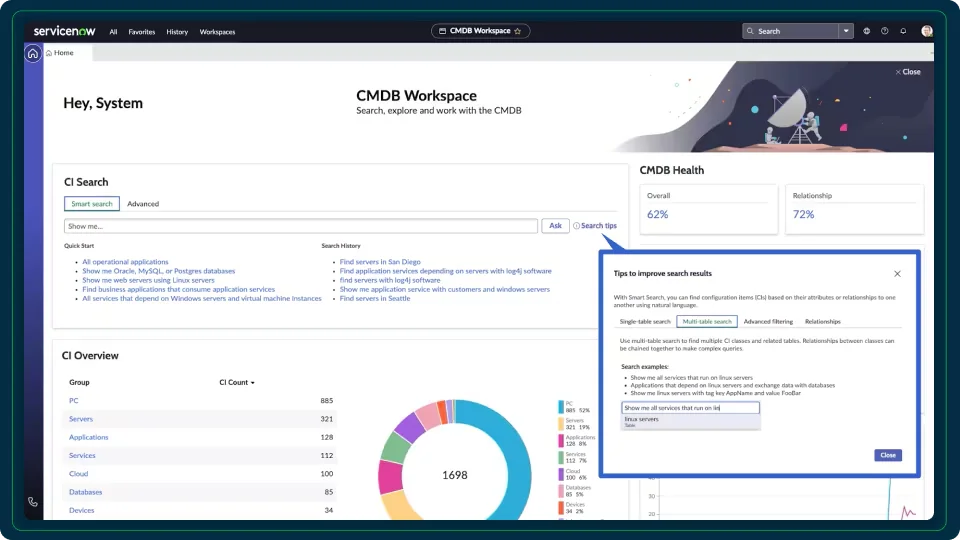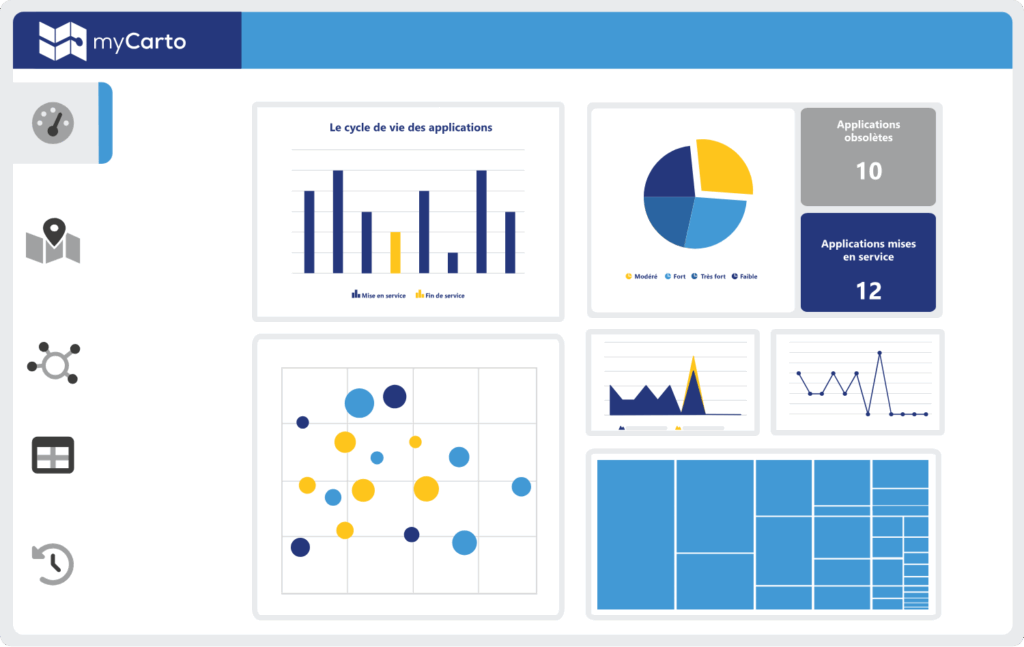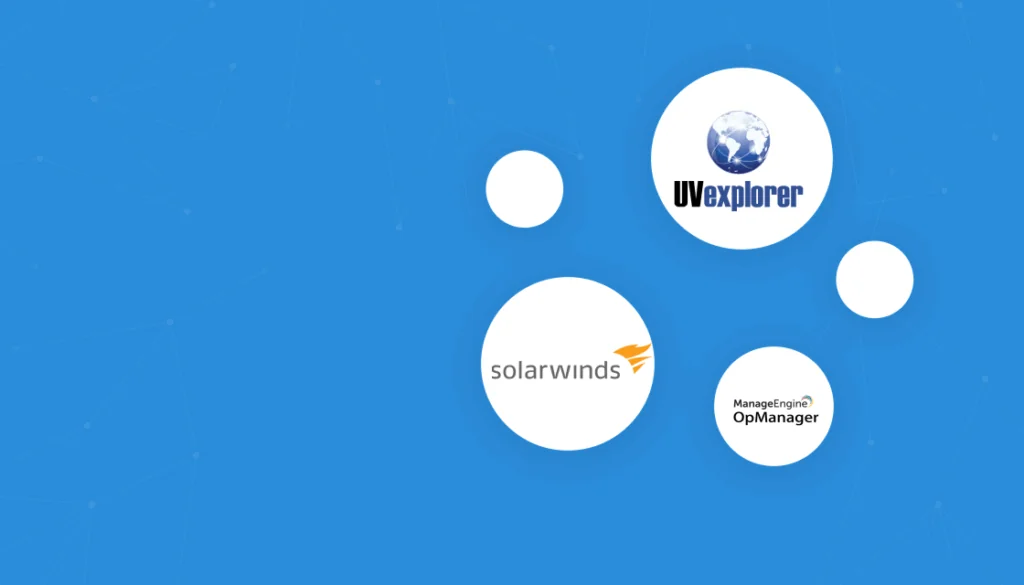What Are IT Mapping Services?
IT mapping services involve the creation of detailed, often visual, representations of an organization’s IT environment to understand its components, dependencies, and relationships, such as hardware, software, networks, and data flows. These services help businesses analyze and monitor their infrastructure, improve efficiency, manage risks, and make informed decisions about their technology services. Leading platforms and providers offer tools and services for building and sharing maps, conducting spatial analysis, and integrating location-based data into applications.
IT mapping services can help organizations:
Table of Contents
Toggle- Visualize IT Infrastructure: Create visual diagrams of how hardware, software, and network components are interconnected and interact to form a complete IT service.
- Document components: Identify and document all critical elements within the IT environment, including applications, data, servers, and network connections.
- Map dependencies: Show the relationships and dependencies between different IT components and how they support business services.
- Analyze performance: Provide a comprehensive view of the IT infrastructure, enabling analysis, monitoring, and optimization of services.
- Support risk management: Help identify potential vulnerabilities and single points of failure by understanding the complex web of interdependencies.
- Enhance decision-making: Offer clear, data-driven insights into the IT environment to support strategic decisions, such as infrastructure upgrades or new service implementations.
What IT Mapping Services Do
Visualize IT Infrastructure
Visualization is one of the core functions of IT mapping services. They automatically detect and layout every component of the enterprise environment, from servers to network switches and cloud resources. The resulting diagrams display how each asset fits into the infrastructure, providing both high-level overviews and granular details.
Having a real-time, updated visual map is essential for teams that manage sprawling, hybrid, or geographically distributed networks. Effective visualization helps quickly trace issues to specific devices, locate assets, and understand network topologies without sifting through static documentation or legacy spreadsheets.
Learn more in our detailed guide to IT infrastructure mapping
Document Components
IT mapping services automate the identification and documentation of hardware and software assets across the environment. They collect detailed information such as device types, operating systems, software versions, and physical or virtual locations. This data feeds into configuration management databases (CMDBs), compliance reports, and auditing requirements.
Comprehensive documentation is critical for IT operations. It allows teams to respond efficiently to support requests, anticipate maintenance needs, and plan for upgrades. Up-to-date inventories also reduce security risks by ensuring that vulnerable or obsolete systems are promptly identified and remediated.
Map Dependencies
Dependency mapping is another vital feature. IT mapping services track relationships between servers, applications, databases, and network devices, visualizing how the failure or modification of one element impacts others. These relationships are mapped automatically and kept current as the infrastructure evolves.
Understanding dependencies ensures service continuity and minimizes downtime. When planning changes, upgrades, or migrations, having accurate dependency data helps teams avoid breaking critical business services and supports safe rollout of new technologies.
Analyze Performance
By integrating with monitoring tools or leveraging built-in analytics, IT mapping services offer insights into the health and performance of components. They identify areas of congestion, latency, or resource bottlenecks. Visualization of performance metrics alongside topology maps helps pinpoint root causes of incidents.
Regular performance analysis supports proactive, rather than reactive, IT management. Teams can use these insights to plan capacity, optimize workloads, and address potential issues before they escalate into outages or customer-impacting problems.
Support Risk Management
Accurate infrastructure and dependency mapping enables improved risk assessment. IT mapping services highlight single points of failure, track unpatched systems, and categorize assets by criticality. Teams can visualize the scope of exposures, such as the impact of cyberattacks or hardware failures, and prioritize remediation based on real-world impact.
Supporting risk management is essential for compliance and business continuity. By knowing exactly what is at risk and where, organizations can allocate resources effectively, enable disaster recovery planning, and avoid compliance gaps that may lead to regulatory penalties.
Enhance Decision-Making
Having a current “map” of IT resources, reliance chains, and performance metrics arms leadership with the information needed for strategic decisions. IT mapping services present data in a way that is accessible to both technical and non-technical stakeholders, supporting transparent decision-making processes.
This capability simplifies merger assessments, cloud migrations, and technology investments. Every decision, from procurement to decommissioning, can be made with accurate, actionable data, reducing uncertainty and aligning IT capabilities more closely with business goals.
Notable IT Mapping Services
1. Faddom

Faddom provides agentless, automated IT mapping to help organizations visualize and understand their entire infrastructure across on-premises, hybrid, and multicloud environments. It continuously discovers servers, applications, and dependencies, generating accurate, real-time maps that support IT operations, audits, and decision-making. By eliminating manual updates and static diagrams, Faddom ensures that IT teams have a unified, up-to-date view of their environments.
Key features include:
- Agentless discovery: Map your entire environment safely in under 60 minutes, without deploying agents or impacting performance.
- Continuous visibility: Automatically detect and update application, server, and network connection changes.
- Accurate dependency mapping: Understand how components interact to improve planning, troubleshooting, and change control.
Hybrid and multicloud support: Gain a unified view of infrastructure across data centers, virtual machines, and cloud platforms.
Seamless integration: Export maps or sync with CMDBs and ITSM tools to maintain reliable, up-to-date documentation. - Compass AI – chat with your infrastructure: Ask questions in plain language to get real-time insights. All data remains private.
Schedule a demo today to see Faddom in action!
2. ServiceNow

ServiceNow’s service mapping solution provides automated visibility into how IT infrastructure components support applications and business services. It uses a variety of discovery techniques to build and maintain accurate service maps across hybrid and multicloud environments.
Key features include:
- Mapping options: Uses tag-based, top-down, and traffic-based methods for flexible service discovery and mapping
- Multicloud support: Provides out-of-the-box discovery and mapping for a wide range of cloud platforms
- Automated updates: Continuously updates service maps as infrastructure changes occur
- AI-driven mapping: Applies machine learning to improve accuracy and reduce manual effort
- CMDB integration: Connects with ServiceNow CMDB for a unified, service-aware view of IT assets

Source: ServiceNow
3. Ivanti

Ivanti Neurons for Service Mapping delivers automated service maps that provide visibility into application dependencies and data center relationships. By discovering physical, virtual, and cloud assets, it builds dynamic maps that show how services are connected.
Key features include:
- Automated discovery: Uses extensible probes and sensors to detect thousands of compute, network, and storage assets across hybrid environments
- Dynamic relationship mapping: Visualizes dependencies between services, applications, and infrastructure in real time
- CMDB integration: Keeps configuration data accurate and up to date by linking service maps with Ivanti Neurons for ITSM
- Change and incident overlays: Displays open incidents and recent changes on service maps to support impact analysis and root cause identification
- Risk and continuity management: Highlights critical assets and potential risks to maintain service availability and operational resiliency

Source: Ivanti
4. BMC Helix Discovery

BMC Helix Discovery provides an automated approach to service mapping, enabling organizations to visualize and manage IT environments across on-premises, hybrid, and multicloud infrastructures. It starts by discovering IT assets and then maps their interdependencies to build real-time service models.
Key features include:
- Automated asset discovery: Uses agentless scanning to identify physical and virtual assets, including servers, applications, and network devices
- Dependency mapping: Automatically detects and models relationships between infrastructure components to create accurate service representations
- Dynamic service visualization: Converts complex dependencies into visual maps that show how services are constructed and supported
- Real-time inventory: Maintains up-to-date asset inventories for cost optimization and compliance tracking
- Security and compliance support: Improves visibility to uncover vulnerabilities and supports faster risk remediation

Source: BMC
5. myCarto

myCarto is an enterprise architecture and information system mapping solution intended to give organizations a multi-layered view of their IT environment. It models the relationships between business processes, applications, data flows, infrastructure, and organizational entities.
Key features include:
- Layered IS modeling: Map processes, applications, data flows, infrastructure, and organizational structures in one scalable meta-model
- Map designer: Create interactive maps with real-time updates, display rules, and access control
- Integrated process designer: Model business processes alongside IT components to simulate the impact of incidents or changes
- Prebuilt library: Get started quickly with a library of standard meta-models, dashboards, queries, and map templates
- Standard compatibility: Compatible with TOGAF, Zachman, and Archimate frameworks for standardized enterprise architecture

Source: myCarto
Related content: Read our guide to IT mapping platform (coming soon)
Conclusion
IT mapping services give organizations the clarity needed to manage complex infrastructures by combining automated discovery, dependency mapping, and visualization into a single, actionable view. They reduce operational blind spots, improve risk awareness, and provide the foundation for faster, data-driven decisions. By keeping infrastructure documentation accurate and current, these services strengthen IT governance, simplify compliance, and enable more reliable delivery of business services in dynamic, hybrid, and cloud-centric environments.







